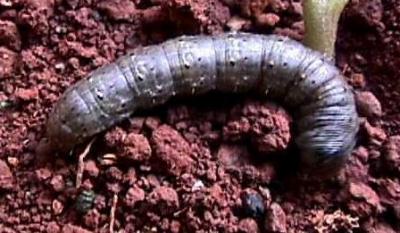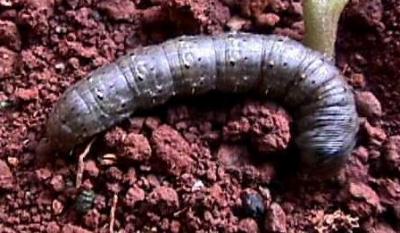Featured Photo

Other Photos

notes
3.1.08 sr: notes ana: match the host plants list with the respective datasheets; although cutworms have many host plants, they are no major pests of all of them, therefore they have not been included in all datasheets of the above mentioned crops; s. by monitoring and decision making: pheromone traps are not available locally. economic threshold for which crop? where? under which conditions?;
featured_photo_title
Cutworm
feaured_photo_co
A.M. Varela, icipe
Is this a Minor Pest?
Yes
Minor Pest Title
Cutworms (Agrotis spp.)
Minor Pest Description
These caterpillars are serious pests particularly in nurseries and of newly transplanted plants. They attack eggplants and many other plants at night. They cut seedlings and usually drag them down into the soil leaving the clean-cut stem. They cannot cut older plants. Large ground beetles, frogs, and birds prey cutworm.
Minor Pest What to do.
- Plough and harrow the field prior to transplanting. This exposes cutworms to natural enemies and desiccation and helps destroy plant residue that could harbour cutworms.
- Make barriers to protect the transplanted seedlings. Barriers can be made by wrapping paper, aluminium foil, thin cardboard or similar materials around the base of transplant stems. Toilet rolls are handy as cutworm collars since they are readily available and will biodegrade into the soil.
- Dig near damaged seedlings and destroy cutworms.
- Conserve natural enemies. Parasitic wasps and ants are important in natural control of cutworms.
Minor Pest Position
1
Minor Pest Firstcontent
116
Pest Type
insect
Custom1
Common names; The common cutworm, turnip moth ([i]Agrotis segetum[/i]); the greasy cutworm, black cutworm, tobacco cutworm ([i]Agrotis ipsilon[/i])
Host Plants
Eggplant (Revised)
Featured Image
PH Pests Media Gallery
